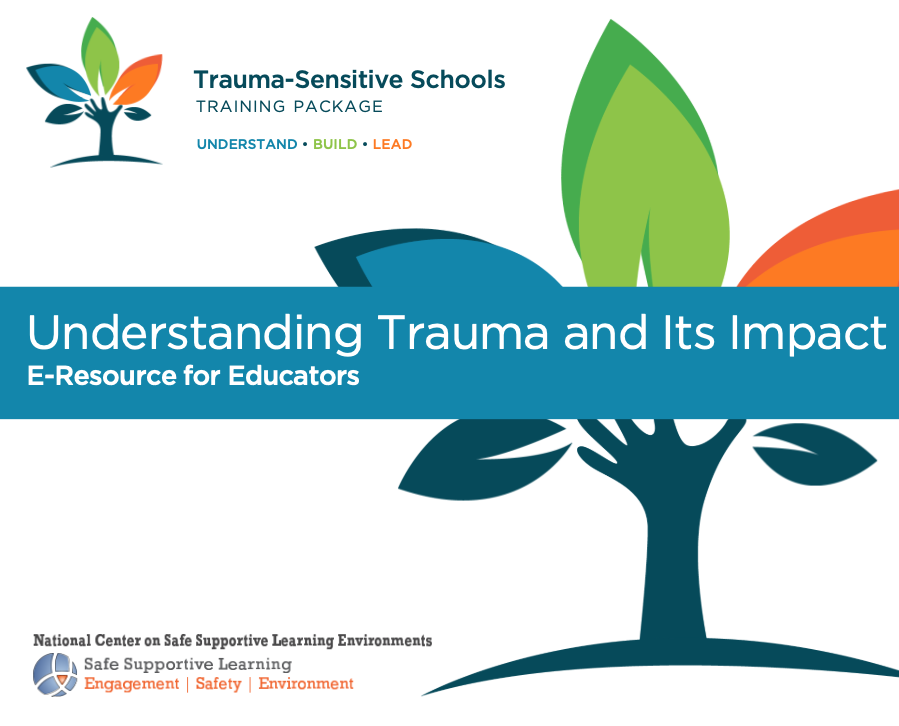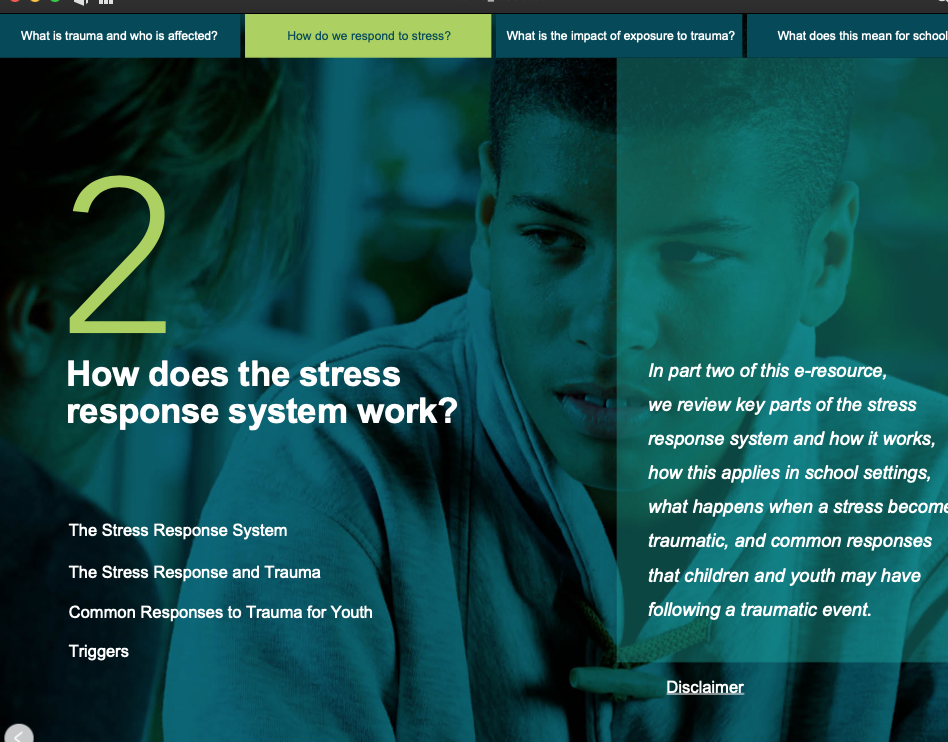A review for my M.S. class…
For the Student’s Choice Assignment, I completed an online training developed by the National Center On Safe Supportive Learning Environments. This online, interactive training was quite extensive with three separate online modules: Understanding Trauma and Its Impacts, Building Trauma Sensitive Schools and Leading Trauma Sensitive Schools. Each training module took about an hour to complete and included lots of performance support, including checklists, handouts and leader’s guides.

The graphic elements and images balanced the text and narration throughout the training.
All three modules adhere to most of the Principles outlined in the Serious eLearning Manifesto, including Provide Realistic Practice, Motivate Meaningful Involvement, Provide Guidance and Feedback, Use Interactivity to Promote Engagement. However, Provide Support for Post Training Follow Through and Provide Realistic Practice could have been improved to better Target Improved Performance. All three of these principles were only marginally introduced in the training and without more practice, and post-training support the Principle of Targeting Improved Performance will not likely be met.
The purpose of the training is to create trauma-informed school systems. The authors overviewed these required elements of a trauma-sensitive school system:
■ Educating all school staff about trauma and its effects
■ Promoting physical and emotional safety in relationships and in the environment
■ Reducing trauma-related triggers in the school environment and eliminating potentially retraumatizing practices, such as harsh or punitive responses
■ Considering trauma in all assessment protocol and behavior plans Trauma-Sensitive Schools Training Package: Implementation Guide 3
■ Ensuring youth and family voice, choice, and empowerment
■ Addressing the secondary effects on educators that can occur when working with trauma survivors
The audience for the training is explained as “Although it was prepared for school and district administrators and staff, the Trauma-Sensitive Schools Training Package includes recommendations for involving students and families” (Implementation Guide, p.1). There appears to be federal or state-based school district funding that supports the dissemination of this material through professional development trainings. This training module just completed a pilot test test in 2018, and includes extensive level-1 assessment surveys in the training materials.
The training allows for self-paced review with guided narration and next and back buttons in an interactive module similar to Adobe Captivate. There were several effective ways the training created interactivity with the audience. For example, buttons were utilized for the audience to “compare and contrast the differences between a traditional school to a trauma-sensitive” school. A short scenario was provided and learners had the choice of selecting whether or not they viewed a ‘traditional’ or ‘trauma-sensitive’ approach to this scenario, and this selection prompted feedback explaining the differences.
Another effective interactivity were Scenarios that profiled a teacher interacting with a student. Leaners needed to choose which aspects of her interaction were ‘trauma-sensitive’ and which were not. Both wrong and right answers received feedback. These practice elements were helpful, but did not extend into asking the learner to practice the skills presented in the material and this strategy would have better aligned with the transfer elements of of the Serious eLearning Manifesto, such as Target Performance Improvement and Aim for Long Term Impact.
One effective way the training did support the Provide Realistic Practice principle was by designing a discussion prompt that asks learners to discuss how to apply the information in the previous slides. This discussion slide supports the Motivating Meaningful Involvement Principle, and two-three “How-To” discussion slides were included in each of the three training modules. These slides asked the learners to “Pause and Reflect” with “your team” on the previous topic. The slide used a consistent visual pattern of a red octagon shape with a hand in the middle to signal this activity. This visual cue broke up the extensive narration and information and asked the audience to think collectively about applying the information they just learned. However, if the training was taken individually, and the learner self-paced through the material, then this aspect that requires a group discussion would not be effective and the authentic practice environment would be lost on the learner.
Overall, the training was highly polished and professional. The left side menu-bar with clickable table of contents made the navigation very easy and encouraged learners to review and re-click areas of interest. Despite a large amount of information in the product, cognitive overload was kept to a minimum with a variety of thoughtfully placed interactive elements, scenarios, and user-choice buttons. The combination of narration, text and graphic images made for a well-paced and interesting training.
As mentioned previously, the only Principle that was less developed was the opportunity for learners to practice some of the recommended strategies, and there did not seem to be any follow through in regards to post-training communication. From the perspective of the Serious eLearning Manifesto, the training was highly successful and supported each principle at least in part, but could be improved by creating a community of knowledge or other communication-based strategies. In doing so, the training would both improve the number of opportunities for authentic practice, but also improve the follow up and therefore sharpen the Manifesto’s “Aim for Long Term Impact.”
Thank you for a great learning experience. This was an interesting and informative assignment. Great to see all of the Principles in action in this training.
Sources:
Link to All Training Materials

This slide shows the interactive delivery. The buttons along the top allow the learner to choose the material by category of interest. These buttons allow learners to move in multiple directions through the information.

Recent Comments